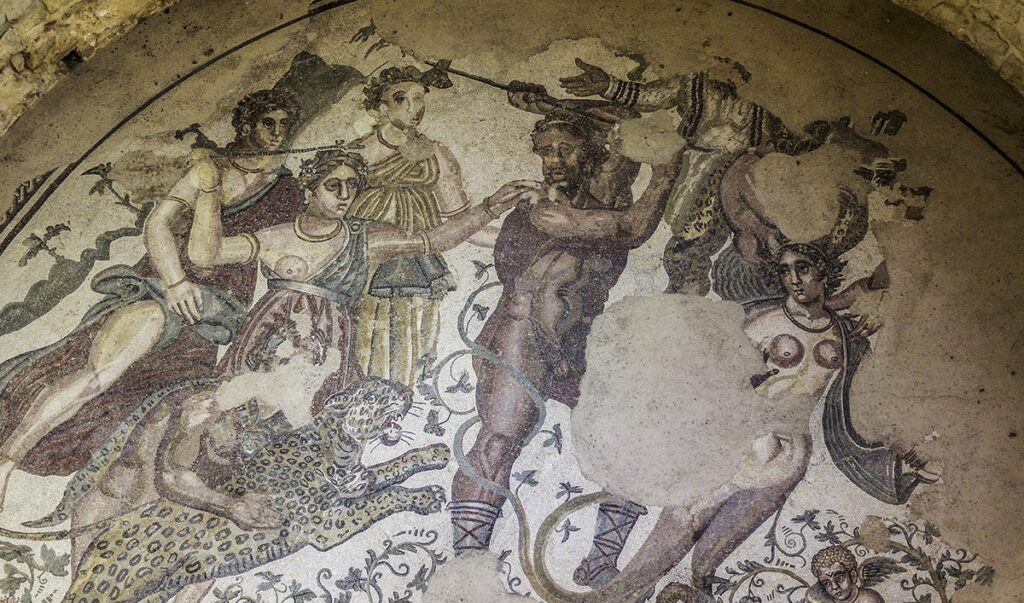The banquets of the ancient Romans were particularly refined and celebrated the prestige of those who organised them, sometimes in a sumptuous and spectacular way.
In addition to being moments of leisure and pleasure accompanied by dances and readings of epic poems during the
symposium
, they also had an important social function by fostering political and business alliances between one course and another. A meticulous re-enactment of this context can be found in
Trimalchio’s feast
. The name of this room – triclinium – derives from the
lectus triclinaris
, or klinai, the small bed on which the Romans, inspired by Greek and Etruscan customs, used to eat their meals.
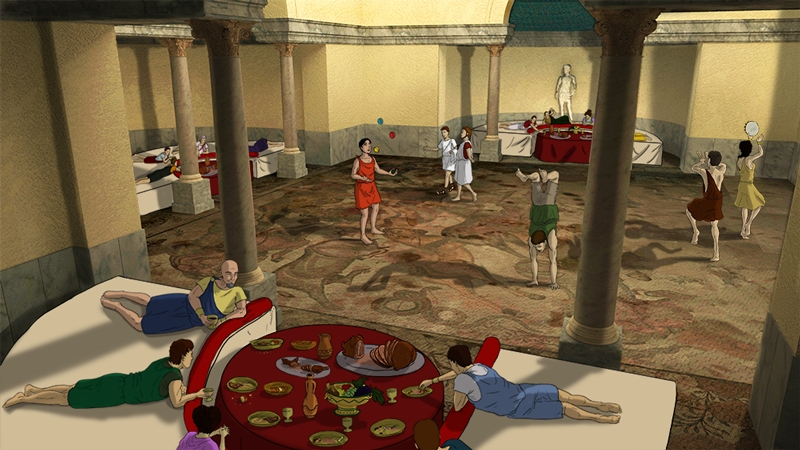 The Triclinium of the Villa Romana del Casale, a building connected to the ovoid portico by a marble-clad staircase, consists of a square hall onto which open three large
apses
The Triclinium of the Villa Romana del Casale, a building connected to the ovoid portico by a marble-clad staircase, consists of a square hall onto which open three large
apses
, originally introduced by columns.
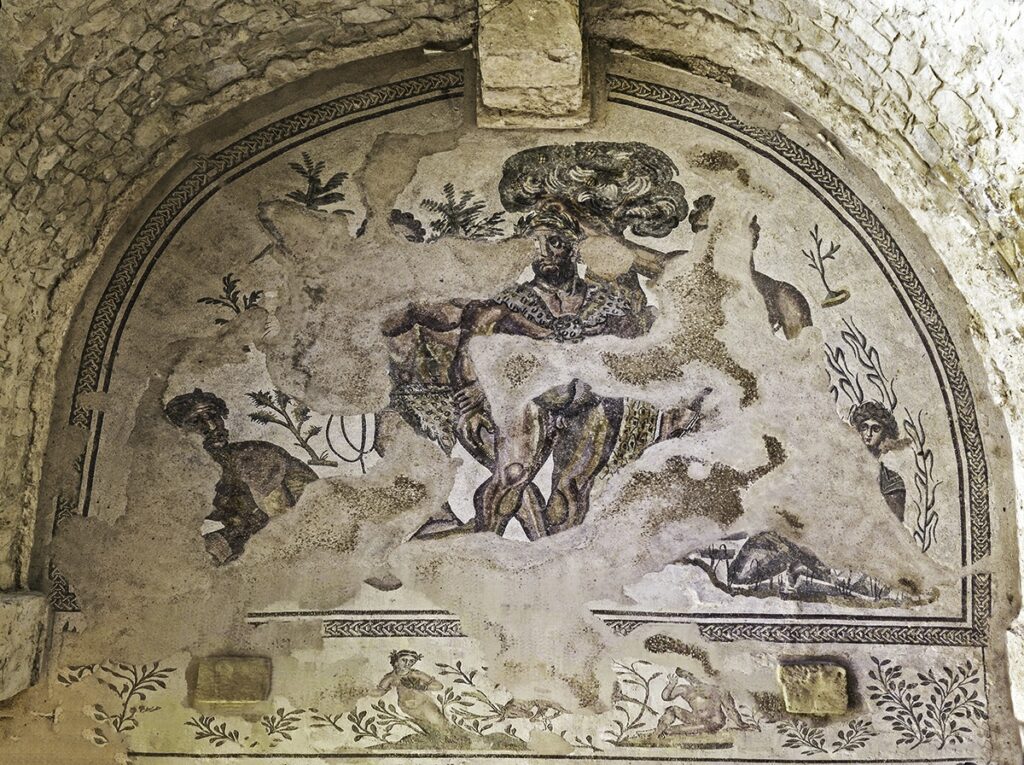 The vast hall is decorated with mosaics that narrate three cycles of Greek-Roman mythology: the
twelve labours of Hercules
The vast hall is decorated with mosaics that narrate three cycles of Greek-Roman mythology: the
twelve labours of Hercules
(central hall);
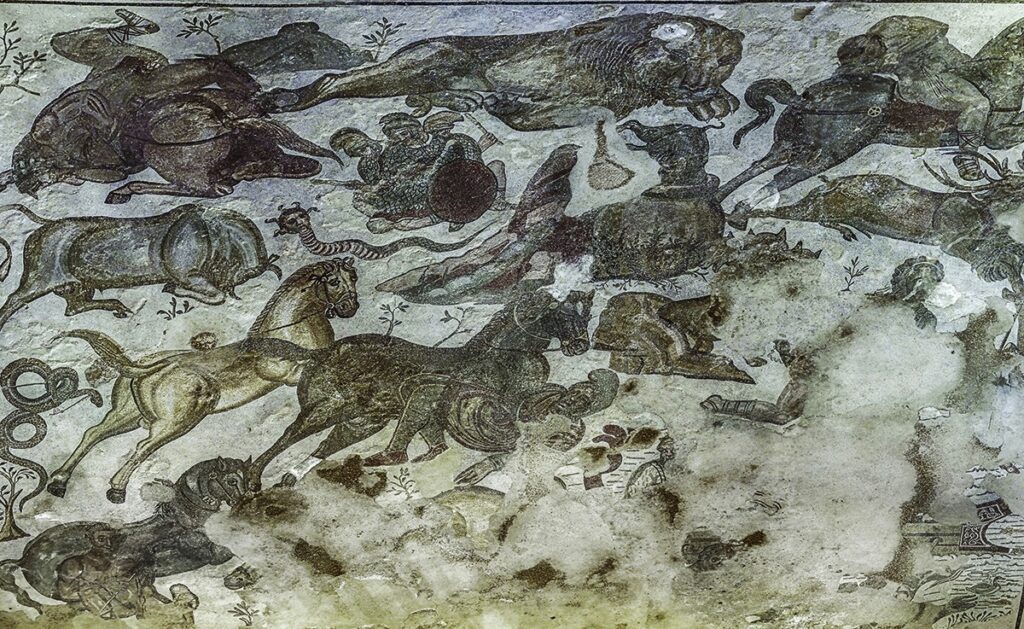 Gigantomachy
Gigantomachy
in the eastern apse;
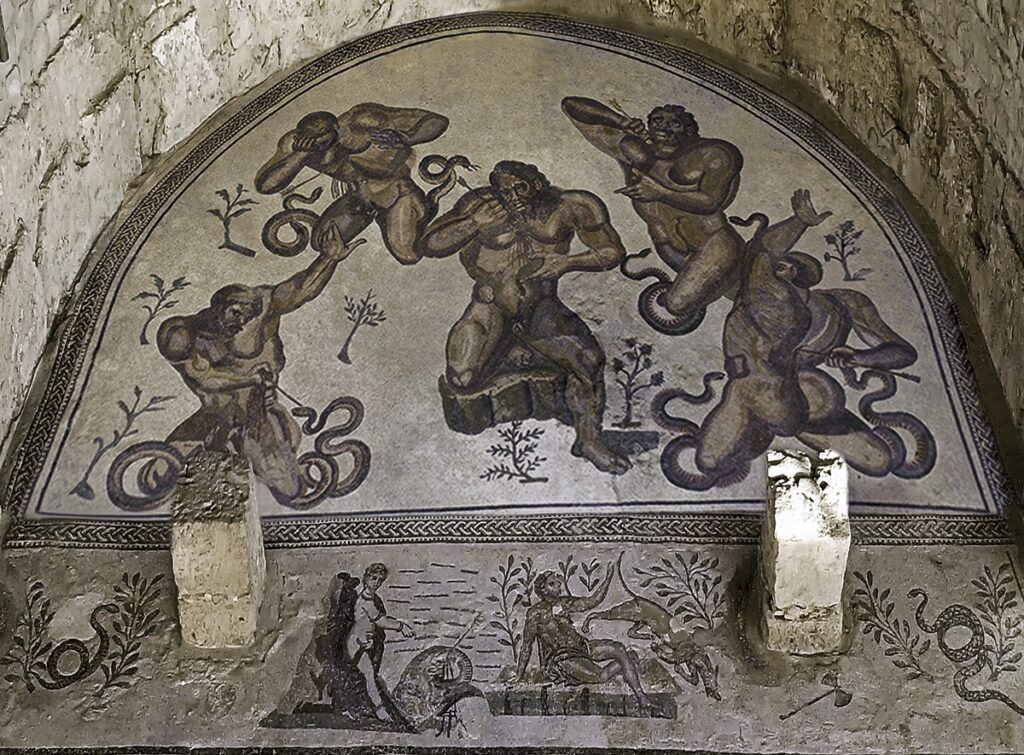 the
myth of Lycurgus and Ambrosia
the
myth of Lycurgus and Ambrosia
in the southern apse, and the
myth of Marsyas
in the northern apse.
